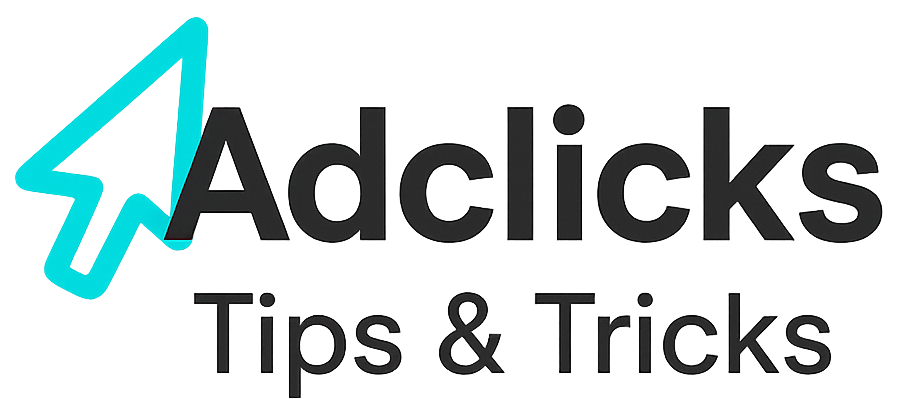Inspire, building a health and wellness community.
Inspire is a large, health-focused social network where patients and caregivers gather in condition-specific communities to swap lived experience, ask questions, and compare treatments. Think of it as support groups plus long-form threads, spanning everything from breast cancer to rare diseases. Company materials claim more than two million registered members and “hundreds” of communities formed around specific conditions, which signals a deep, need-driven audience rather than casual browsers.
For a publisher, that matters because conversations are intent-rich: people come looking for practical help, peer validation, and evidence they can take back to clinicians. When you contribute responsibly—answering questions, sharing reputable references, and offering tools—you can earn steady, trust-based traffic over time. If you also run relevant campaigns through Adclicks on your own site, you can reinforce that intent when visitors arrive without turning community participation into an ad pitch.
Global reach is meaningful even though usage skews toward North America. Third-party panels estimate ~525k monthly visits to Inspire’s website recently, with the U.S. contributing the majority of desktop traffic and notable secondary interest from the U.K., Canada, Australia, and India. Treat these as directional, not absolute, but they do match what you’ll see in condition groups and English-language threads.
Audience Makeup: Patients, Caregivers, and Condition-Centric Communities
Most participants self-identify as patients or caregivers discussing specific diseases, treatments, side effects, and quality-of-life adaptations. The groups directory shows a long tail of conditions and topics (from advanced breast cancer to EDS), which suggests your best bet is to meet people in narrowly defined spaces with resources tailored to that micro-community. That structure pushes you toward depth over generalities.
Publishers who serve this audience well provide plain-English explanations, symptom trackers, side-effect guides, financial navigation tips, caregiver checklists, and decision aids. If your site offers those assets, you can reference them in context—ideally as follow-ups to a question you’ve just answered with empathy and sources. Pair that approach with thoughtful on-site journeys; if you’re using Adclicks for contextual ad fill on your property, keep placements adjacent to content that mirrors the exact question people came to solve.
A final point about size and frequency: company and research pages connected to Inspire’s corporate arm reference “millions” of members and “roughly 10 million” annual visitors to communities. Even if you discount marketing language, the scale is large enough that a focused publisher can find stable pockets of readers in a handful of condition hubs.
Culture and Norms: Trust First, Promotion Last
Inspire is built around peer support and privacy. People share sensitive medical details in good faith; many use pseudonyms and expect a non-judgmental tone. Your reputation rests on being useful: cite reputable sources, avoid sweeping claims, and never position your site as a replacement for clinical care. That ethos earns replies and profile clicks—your gateway to durable referral traffic.
You can participate as a brand or as a named editor if you add value. Answer the question first in the thread, then offer an “if helpful” link to a deeper resource on your site. Keep disclosures clear when you’re affiliated with a product or a sponsor, and respond to follow-up questions in the same thread to sustain momentum. When those readers later arrive on your domain, align your Adclicks placements with the exact topic that drew them, so advertising feels like relevant navigation rather than noise.
Moderation is real, and guidelines prioritize safety, respect, and non-solicitation. Plan for a long game rooted in service: conversations you help today can send traffic for months as newcomers search threads and revisit saved links. That flywheel is slow at first, then steady—exactly the pattern that suits publisher economics and complements any careful Adclicks strategy on-site.
Traffic Signals and Where Readers Come From
External traffic estimates suggest that Inspire’s visitors arrive via a blend of direct entry and search, with Google often a top upstream source; after visiting, users frequently head to platforms like Facebook—another hint that conversations continue across channels. Treat these as directional signals to plan posting windows and tie your content calendar to search demand.
What does this mean for publishers? Build condition-page hubs on your site that match the language people use in Inspire threads—clear titles, common synonyms, and FAQs. That way, when you share a resource in a discussion, clicking readers land on exactly what they expect. Your on-page experience should include obvious internal paths (e.g., symptom guide → side-effect management → clinician discussion sheet). Adclicks can then serve context-matched units supporting that journey without hijacking attention.
Geography matters most for care access and time zones. With U.S. traffic dominant and U.K./Canada/Australia meaningful, schedule replies and resource drops when those communities are most active. Seasonal and awareness-month spikes (e.g., Breast Cancer Awareness) show up in both search and discussion volume; publish and queue relevant resources ahead of those curves, and keep related Adclicks creatives synced on your site.
Website Archetypes That Fit the Inspire Audience
Three publisher types tend to resonate. First, evidence-led explainers: sites that translate guidelines into plain language, with citations and diagrams. Second, tools and worksheets: trackers, appointment prep lists, and interactive “what to ask” cards. Third, lived-experience magazines: edited narratives that merge patient perspective with clinician review. Each maps cleanly to condition groups and earns saves/recirculation.
If you operate any of these models, think in series—“Week 1 after diagnosis,” “First follow-up,” “Insurance hurdles 101.” Series make it easy to answer a thread today and leave a breadcrumb trail for the reader’s next three questions. When those readers click to your site, use Adclicks placements to highlight adjacent, truly helpful offers (e.g., a free worksheet) before any hard monetization.
Avoid generic listicles and thin affiliate roundups. The audience here values lived proof and specificity. Build your editorial standards around clinician-reviewed bulletproofing, plain-English summaries, and up-front disclaimers. That transparency drives trust and, over time, repeat visits that support a measured Adclicks plan on your property.
Finding the Right Communities (Without Spamming)
Start with the public groups directory to locate disease hubs that overlap with your editorial strengths. Read top posts to hear the vocabulary patients actually use—this will shape your headlines and on-page subheads. When you do join a discussion, answer in the thread with empathy and clarity before offering a link. This pattern gets you welcomed rather than flagged.
Keep a lightweight research sheet per community: common symptoms discussed, treatment acronyms, frequent support needs (transport, billing, caregiving). Use that sheet to map discussion themes to resources you already have—or to brief new content you can publish next. Once live, return to the thread with an update and a short, plain link. Back on your site, mirror that thread language in titles and Adclicks placements so the handoff feels seamless.
As you learn rhythms (which days/hours are busiest), time your contributions to when help will be seen by the most community members. A single, well-placed answer can attract a long tail of readers who find it later. Those readers are primed for deeper guides, printable tools, and context-aware Adclicks units that point to complementary articles, not distractions.
Content That Resonates on Inspire (and What to Avoid)
Most-clicked resources answer narrow, practical questions: “How do I manage X side effect?” “What should I ask before my next appointment?” “Has anyone tried this therapy?” Write for a ninth-to-eleventh-grade reading level, with short paragraphs and scannable subheads. A clear summary box at the top can help anxious readers confirm they’re in the right place.
Visuals should do work: symptom timelines, dosing calendars, insurance steps, and printable checklists. These assets get shared in threads because they reduce cognitive load. Host them on fast, no-wall pages to encourage frictionless sharing. On those pages, place Adclicks units in unobtrusive areas that sit beside the relevant section, not above it, to keep focus on the reader’s task.
Avoid sensational claims and miracle-cure framing. Moderators and veteran members push back hard on hype, which can sink trust with the very people you hope to help. A calm, sourced voice wins replies, profile clicks, and referrals—outcomes that compound and make any on-site Adclicks monetization feel additive rather than pushy.
Ethical Participation: Disclosures, Boundaries, and Tone
If you’re a publisher with commercial relationships, disclose when relevant. A short line like “We publish independent guides; some pages contain ads that do not affect our recommendations” is enough in most contexts. Keep product mentions informational, not persuasive, and defer to members’ lived experience; they are the authority on day-to-day realities.
Set a house style for community replies: empathetic opener, direct answer, 1–2 reputable references, optional link to a deeper guide. Close with an invitation to follow up in-thread. When people click through, greet them with a page that repeats your key point above the fold and offers a next step appropriate to their situation. Align any Adclicks placements to that single task so your site feels like an extension of the help you offered.
Track what you share. A simple spreadsheet listing thread topic, link posted, and outcome (replies, clicks, time on page) will show which messages resonate. Use those lessons to adjust your content calendar and to fine-tune on-site Adclicks categories you allow beside high-performing articles.
Measuring Fit: What to Watch Beyond Clicks
Third-party panels can show you macro trends—visit volumes, country mix, and traffic sources—useful for planning, but your best signals are on your own site: scroll depth, time to first interaction, and completion of “micro-wins” (downloading a checklist, saving a calendar). Use URL tags so you can tie outcomes back to specific threads and communities.
Compare thread-linked traffic to search traffic on the same article. If thread visitors bounce faster, your headline or hero summary may not match the promise you made in the community. Fix the mismatch and re-engage with an “updated for clarity” note in the same discussion. When you see strong thread performance, scale nearby topics and keep any Adclicks placements consistent across that cluster.
Watch post-click pathways: which links do Inspire readers choose next? Build breadcrumb CTAs that relate to their likely questions (“Next: Questions to ask your oncologist about X”). Treat on-site ads as signposts toward deeper help. That mindset preserves trust and keeps the door open for a second and third visit supported by Adclicks without crowding the reading experience.
Building Landing Paths That Earn Trust
Every link you share should land on a page that repeats the line you used in-thread within the first screen. Add a short, bolded “Summary for Patients/Caregivers” and a “Talk with your doctor” disclaimer. Place a printable or downloadable asset near the top if it’s a common need; these earn saves and bedside use.
Keep forms optional. Many Inspire readers are in active treatment or caregiving and may be anxious. Let them consume the guide without gates; offer an optional email capture for updates or a worksheet bundle at the end for those who want it. If you monetize with Adclicks, keep ad density low on these pages and favour contextual categories aligned to the condition to avoid cognitive friction.
Finally, invest in page speed and accessibility (alt text, legible contrast, large tap targets). Mobile dominates many health journeys, especially for caregivers browsing at clinics or at night. Fast, usable pages respect that reality and they improve every other KPI—including the effectiveness of any Adclicks inventory you choose to run.
What the Numbers Say (and How to Use Them Carefully)
Panels like Similarweb and Semrush estimate that Inspire’s site handles roughly half a million monthly visits with a heavy U.S. footprint, modest pages-per-visit, and average session durations around a minute-plus; sources are a mix of direct and Google search. Use these numbers as planning cues, not absolute truth—they fluctuate and undercount closed-group activity and app use.
Translate those cues into a practical plan: target U.S. and English first (expanding to the U.K., Canada, and Australia as you gain bandwidth), publish at a ninth-to-eleventh-grade reading level, and build articles that answer a single, focused question per page. Those are the pieces most likely to win saves and re-shares in condition threads. On your site, mirror thread phrasing in headings so Adclicks’ contextual logic can align allowable categories to each article cleanly.
If your content earns replies and saves, volume compounds even without viral spikes. A dozen accurate, practical posts in the right communities can generate steady, long-tail referrals; over a quarter, that becomes dependable baseline traffic. That’s the ideal environment for conservative, context-matched Adclicks placements that don’t crowd the reader while still supporting your publishing operation.
Publisher Pitfalls to Avoid
Don’t paste links as first contact. Participate in the thread, answer clearly, then, if appropriate, add “If helpful, here’s a plain-English guide we wrote on this exact topic.” That sequencing is the difference between welcome expertise and self-promotion. It also increases click quality, which you’ll see in on-site engagement.
Avoid thin affiliate pages and generic symptom lists. Members will spot them instantly. Build “clinician-reviewed” credibility by citing guidelines and patient orgs in your content. A trustworthy core raises all metrics that matter—and creates a receptive setting for any Adclicks inventory you choose to show on those pages.
Don’t assume one post equals traffic forever. Revisit successful threads with updates (“We added a new dosing calendar—free download”) to refresh interest. Each helpful update is a new invitation back to your site; on arrival, keep the experience focused, fast, and consistent with your Adclicks categories so the visit stays on-task.
Action Plan (10 steps to get started)
- Map your strengths to Inspire’s groups directory; shortlist 5–8 condition communities aligned to your editorial assets.
- Build (or polish) 10 cornerstone pages that answer one narrow question each; add a 3–5 line patient/caregiver summary at the top.
- Create two printable tools per cornerstone (checklist, calendar, question sheet); host ungated for frictionless sharing.
- Set a ninth-to-eleventh-grade reading level, strong contrast, and fast mobile performance site-wide; test on a mid-range phone.
- Draft a reply template: empathetic opener, direct answer, 1–2 reputable citations, optional “if helpful” link to your guide.
- Post during peak hours for U.S./U.K./Canada; track which days and times earn replies, then schedule around those rhythms.
- Tag shared URLs; measure scroll depth, time to first interaction, and completions of micro-wins (downloads, saves). Semrush
- Build breadcrumb CTAs on-site (“Next: talk with your doctor about X”); keep any Adclicks placements contextual and low-distraction.
- Maintain a contributions log (thread, date, link, outcome); revisit top threads monthly with updates and new tools.
- After 6–8 weeks, promote high-performing topics into small series; scale calmly while keeping your Adclicks categories aligned to each series’ intent.
Relevant Links
- Support: https://support.snipesearch.co.uk/
- FAQ: https://adclick.snipesearch.co.uk/index.php?page=index/faq
- Contact Form: https://adclick.snipesearch.co.uk/index.php?page=user/support
Stay Connected
- Snipesocial: https://www.snipesocial.co.uk/pages/snipesearch
- Twitter: https://twitter.com/snipesearch_uk
- Facebook: https://facebook.com/snipesearch
- LinkedIn: https://linkedin.com/company/snipesearch/
- VK: https://vk.com/snipesearch_uk
- Focus: https://focus.xyz/snipesearch
- YouTube: https://youtube.com/@snipesearch
- diaspora: https://diaspora.snipesearch.net/people/7431fcf0806c013e936e00163c6e7bdf
- Friendica: https://friendica.world/profile/snipesearch
- Hi5: https://www.hi5.com/snipe5
Analytic Tools
StatCounter: https://statcounter.com/
Rommie Visitor Analytics: https://rommie.net/




